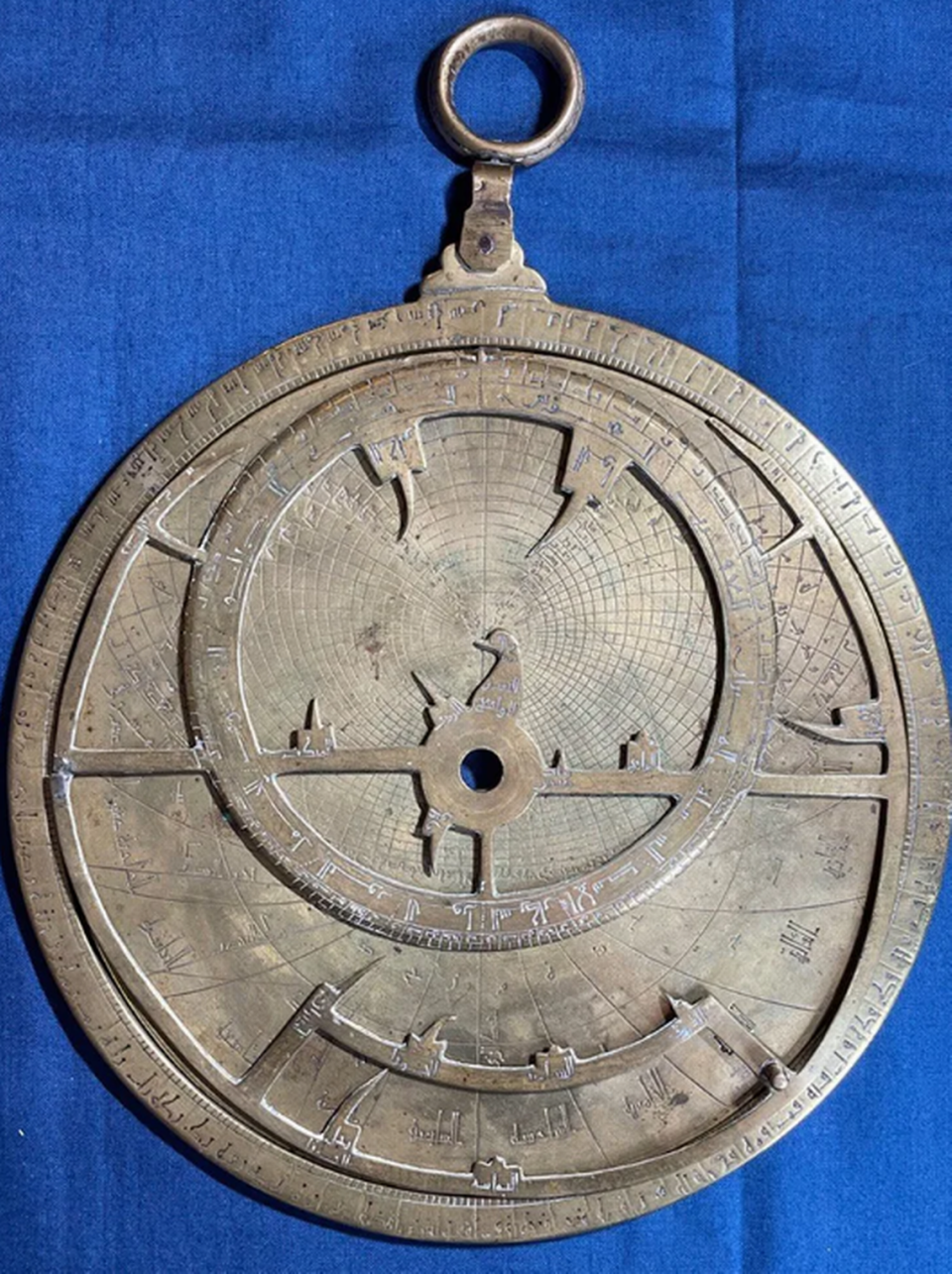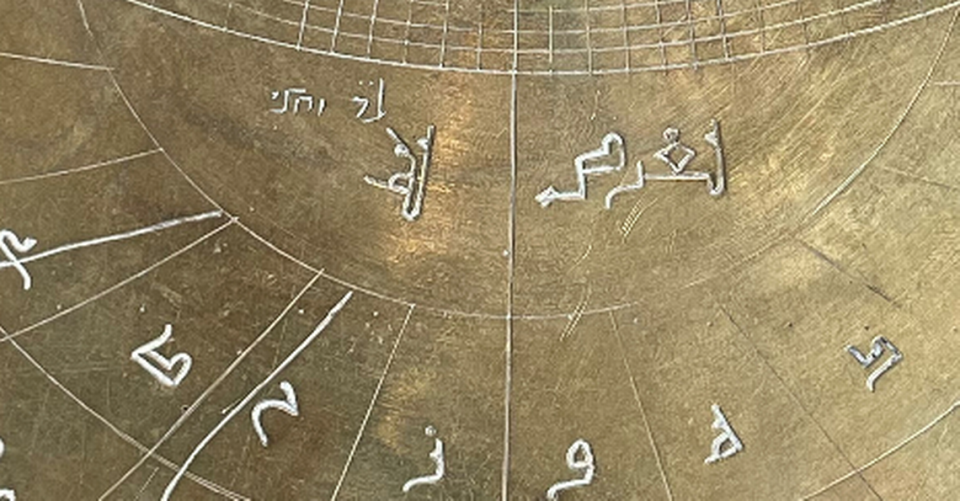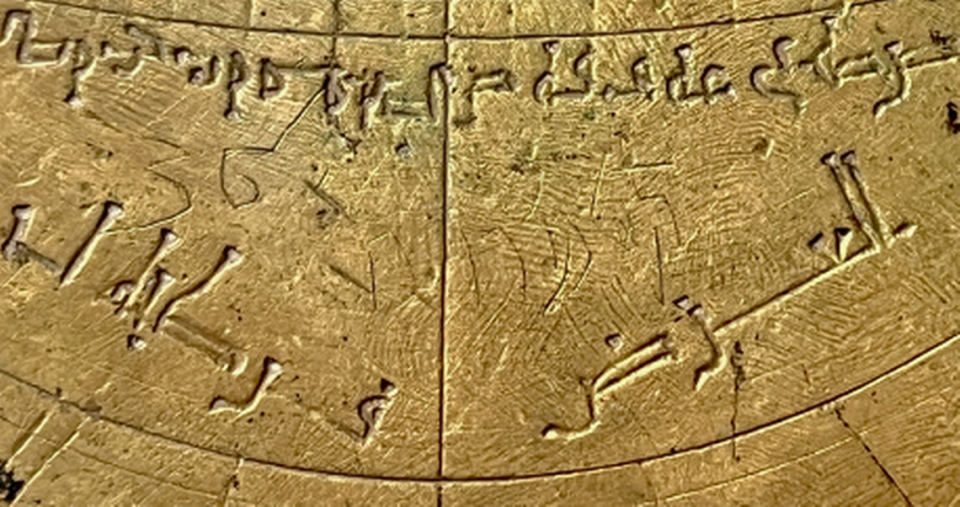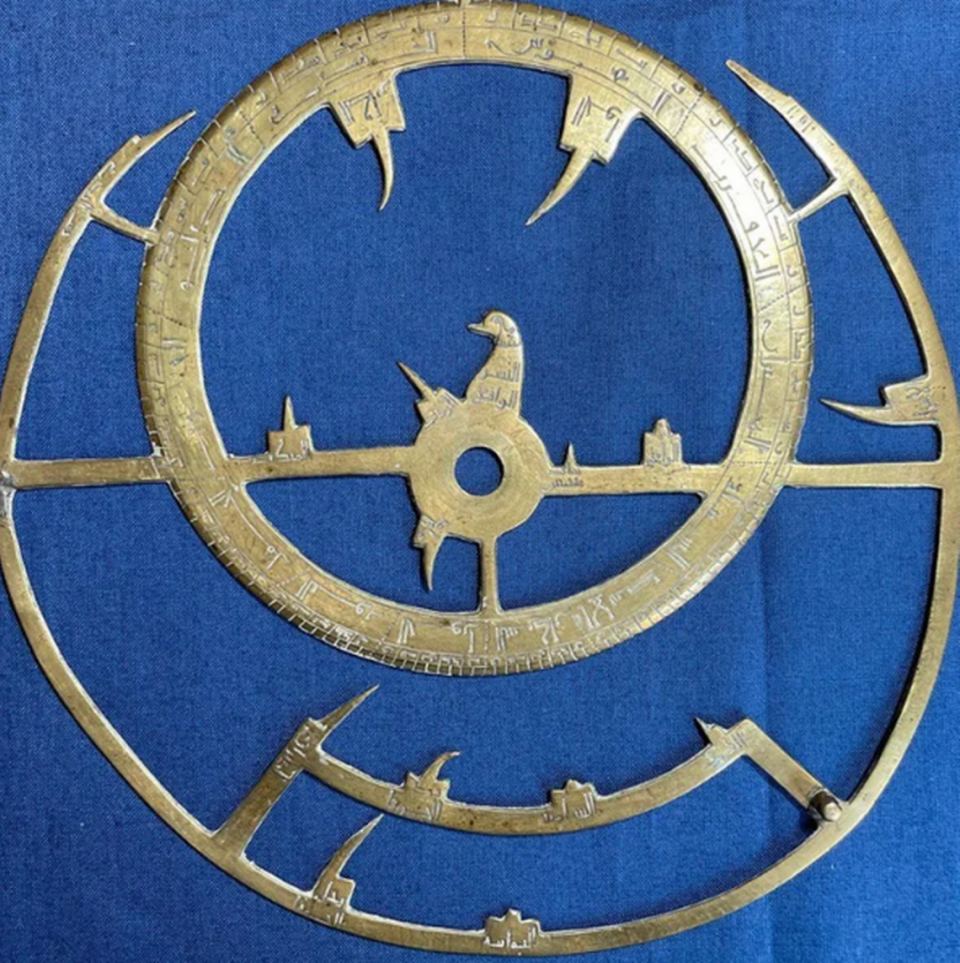Museum collection photo leads to ‘remarkable’ discovery. ‘Thought it was an illusion’
Federica Gigante was preparing for a lecture about Islamic culture in Europe when she looked up Ludovico Moscato — an Italian collector from the 17th century whose collection included Islamic artifacts.
The Google search turned up a portrait of the collector and a photo of a museum room at Fondazione Museo Miniscalchi-Erizzo in Verona.
“On the corner of that photo, I could see something that looked like an astrolabe,” Gigante told McClatchy News in a March 4 interview. “At that time, that was pretty much my life. I was curating astrolabes in Oxford, so I was basically surrounded by them all day long.”

Uncover more archaeological finds
What are we learning about the past? Here are three of our most eye-catching archaeology stories from the past week.
→ Emerald green artifact 'ignored' for 80 years was 'rare' 500-year-old find
→ 2,400-year-old underground discovery stumped experts for decades — until now
→ Stone sarcophagi went unopened for 600 years — until now. See what was found inside
Gigante’s interest was piqued, so she immediately contacted the museum and asked about the artifact.
Coincidentally, the museum, too, was interested in the astrolabe, but had not found any experts to come look at it.
“It was like that lucky coincidence that I had just contacted them,” she said. “When they sent photos, I realized it was actually probably a lot more than I had thought initially and anyone had realized.”
Astrolabes were “the world’s first smartphone,” the University of Cambridge said in a March 4 news release about the discovery.
“They provided a portable two-dimensional model of the universe fitting in their user’s hand, enabling them to calculate time, distances, plot the position of the stars and even forecast the future, by casting a horoscope,” according to the university.
A few months later, Gigante went to Verona to examine the artifact in person. As she looked at it, she began noticing smaller inscriptions made among more prominent Arabic inscriptions.
“I initially thought it was an illusion,” Gigante said.
But a closer look revealed that Gigante was right: There were both Arabic and Hebrew inscriptions in the bronze.

“I could only make them out in the raking light entering from a window,” she said in the university’s release. “I thought I might be dreaming but I kept seeing more and more. It was very exciting.”
Further analysis revealed numeric inscriptions that were “clearly added by a Latin Italian speaker,” according to Gigante.

After examining and studying the astrolabe, Gigante determined that the “remarkable” artifact dates to the 11th century, according to a March 1 study published in the journal Nuncius.
It likely originated from Spain before making its way through North Africa — probably to either Morocco or Egypt — and ending up in Italy, where it has remained
The remaining preserved pieces of the astrolabe include its main body, two plates and its “rete” — which is a disk with piercings to represent a map of the sky. One of the plates was a replacement, Gigante said in her study.
Photos show the astrolabe’s rete, which includes a bird-like carving at its center.

The astrolabe is engraved with various geographic coordinates, including “the latitude of Cordoba” and “the latitude of Toledo,” both in Spain, according to the university. The second plate includes North African latitudes.
The first plate also has an inscription with a dedication and signature including the names Isaac and Jonah. Gigante believes these are Jewish names written in Arabic script, suggesting that “the object was at a certain point circulating within a Sephardi Jewish community in Spain, where Arabic was the spoken language.”
Gigante said the astrolabe is “quite rare.”
There are only about five or six known astrolabes with Arabic and Hebrew engravings, she said. The Verona astrolabe is “even more exciting” because it includes Latin, too.
“This isn’t just an incredibly rare object,” Gigante said in the university’s release. “It’s a powerful record of scientific exchange between Arabs, Jews and Christians over hundreds of years.”
Verona is in northern Italy, about 75 miles west of Venice.
Emerald green artifact was ‘ignored’ for 80 years. It was a ‘rare’ 500-year-old find
Hunt for ancient Roman pottery workshop leads to much older ‘exciting’ find
Museum basement hid an ancient royal kitchen in Poland. See the 500-year-old discovery

